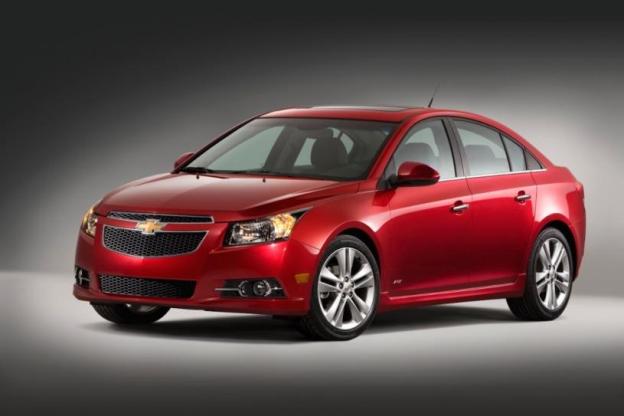 The compact car segment is heating up. A new Volkswagen Golf and Nissan Sentra are set to begin production this fall. Meanwhile General Motors is preparing a new Chevrolet Cruze for 2015.
The compact car segment is heating up. A new Volkswagen Golf and Nissan Sentra are set to begin production this fall. Meanwhile General Motors is preparing a new Chevrolet Cruze for 2015.
GM just announced a $220 million investment in tooling and equipment for the Lordstown, Ohio plant that builds the Cruze, as well as its Parma metal stamping facility near Cleveland. With so much money invested in new tooling, the changes should be significant.
Chevy is promising a restyled exterior, a more spacious interior, a bigger trunk, and better fuel economy, which are pretty much givens for any new mainstream car. GM’s stock prices would probably drop if it promised a smaller car with worse fuel economy.
So what can buyers expect when the 2015 Cruze hits showrooms? The fact that GM is retooling a metal stamping plant along with the Cruze’s assembly line means the Cruze’s new sheetmetal probably will be very different. It could also portend future variants like a hatchback or coupe: the current Cruze is sold only as a sedan, but competitors like the Honda Civic, Hyundai Elantra, and Ford Focus are sold in multiple body styles.
The 2015 Cruze will likely feature gasoline and diesel engines. Chevy is introducing a diesel version of the current Cruze for calendar year 2013, likely with the 2.0-liter turbodiesel sold in Europe.
A return of the mileage-champion Cruze Eco also seems likely; that car’s EPA-rated 28 mpg city and 42 mpg highway will help raise Chevy’s Corporate Average Fuel Economy (CAFE), if nothing else. Maybe Chevy will reward enthusiasts with a performance-oriented Cruze RS or SS, which could compete with the Focus ST, Civic Si, and Golf GTI. That seems unlikely, though.
The 2015 Cruze will be an important care for GM. The current Cruze was the second best-selling GM vehicle in 2011, after the Chevy Silverado pickup truck. It’s also the fourth best-selling compact car in the U.S., with only the Focus, Civic, and Toyota Corolla ahead of it.
The new Cruze will also be the first car to ride on GM’s new D2XX platform, which will underpin several future models in different global markets.
Before any of that happens, Lordstown needs to actually build the cars. GM declined to reveal a detailed timeline for the 2015 Cruze’s rollout, but it will reportedly launch in the fall of 2014.


